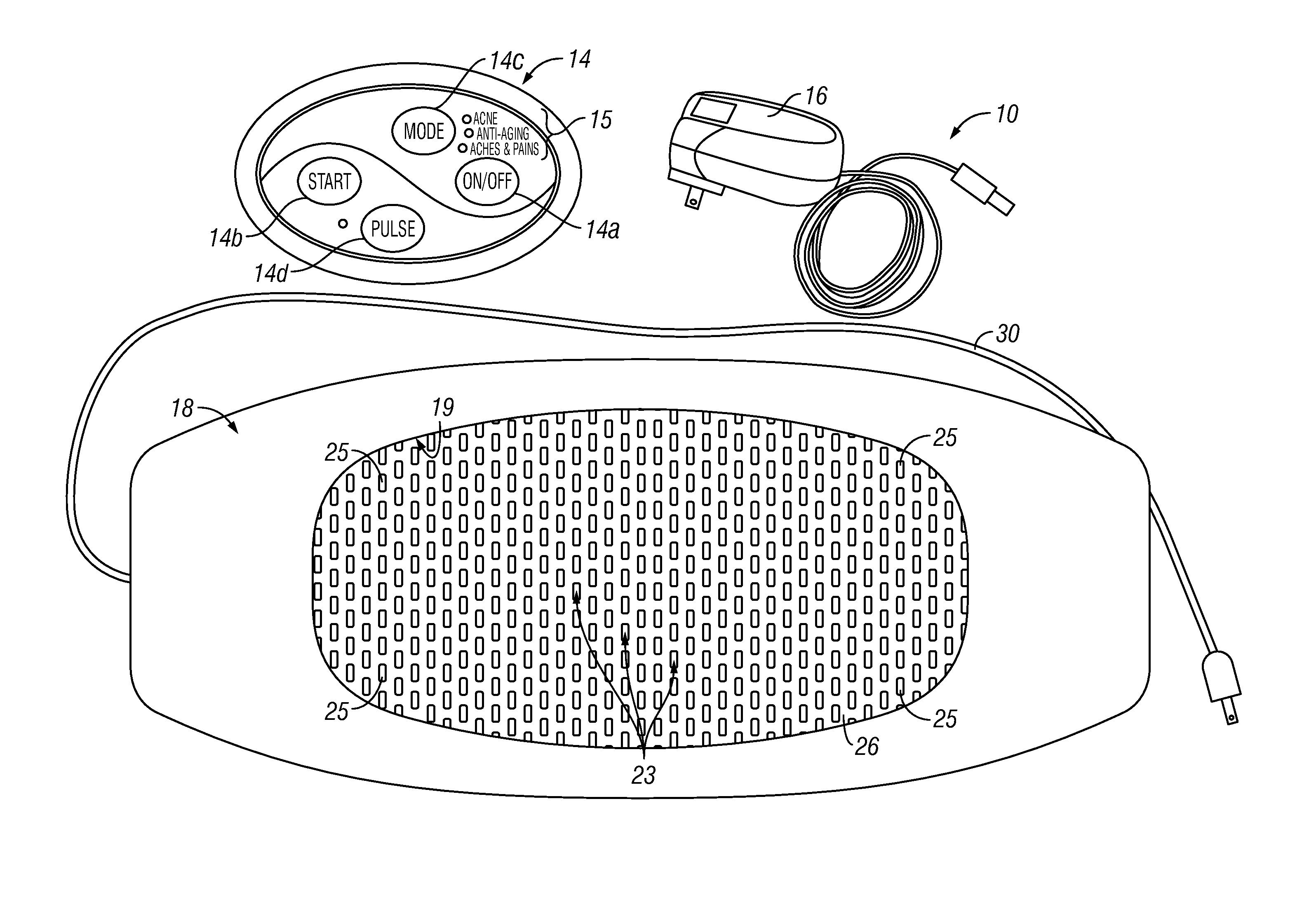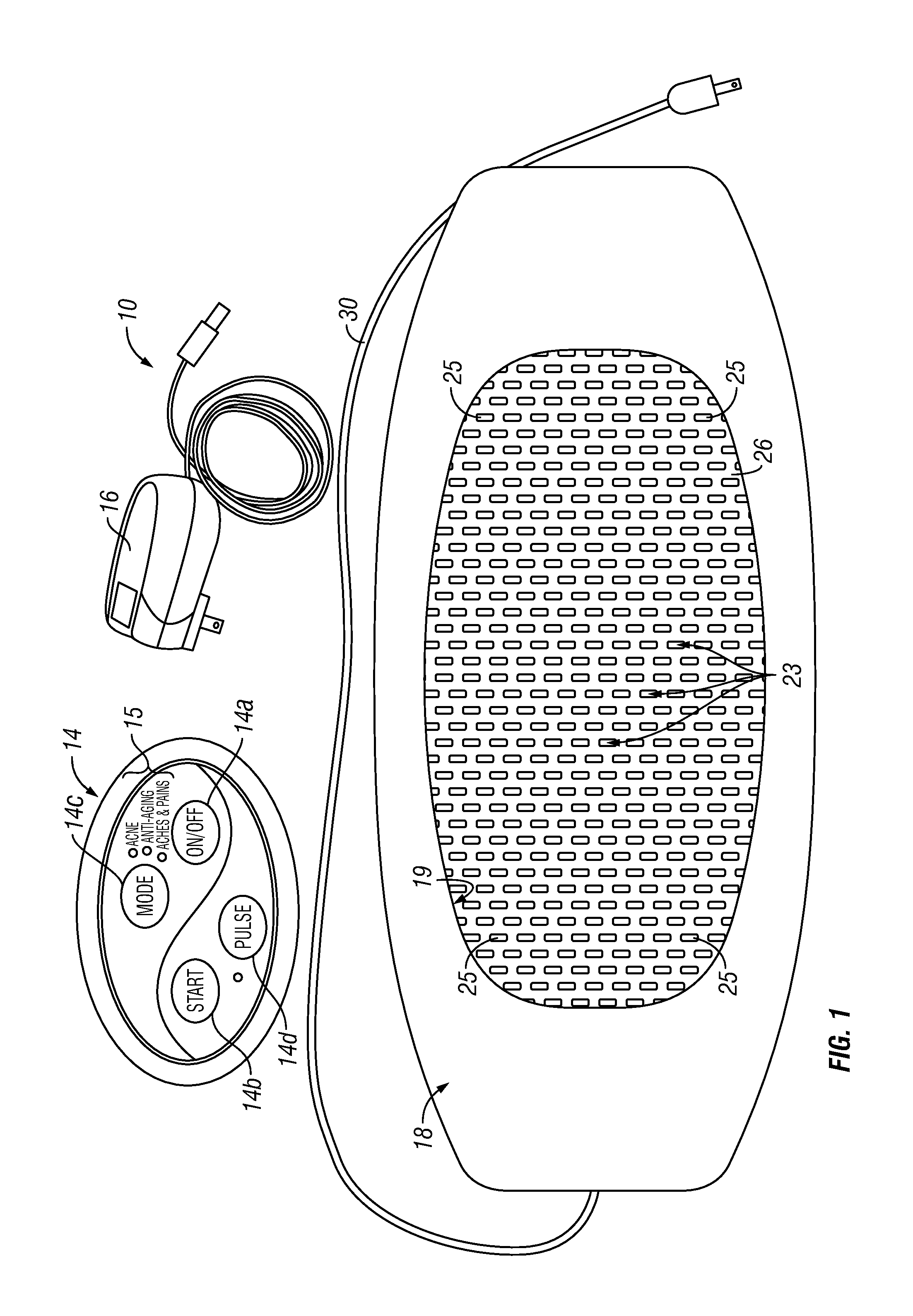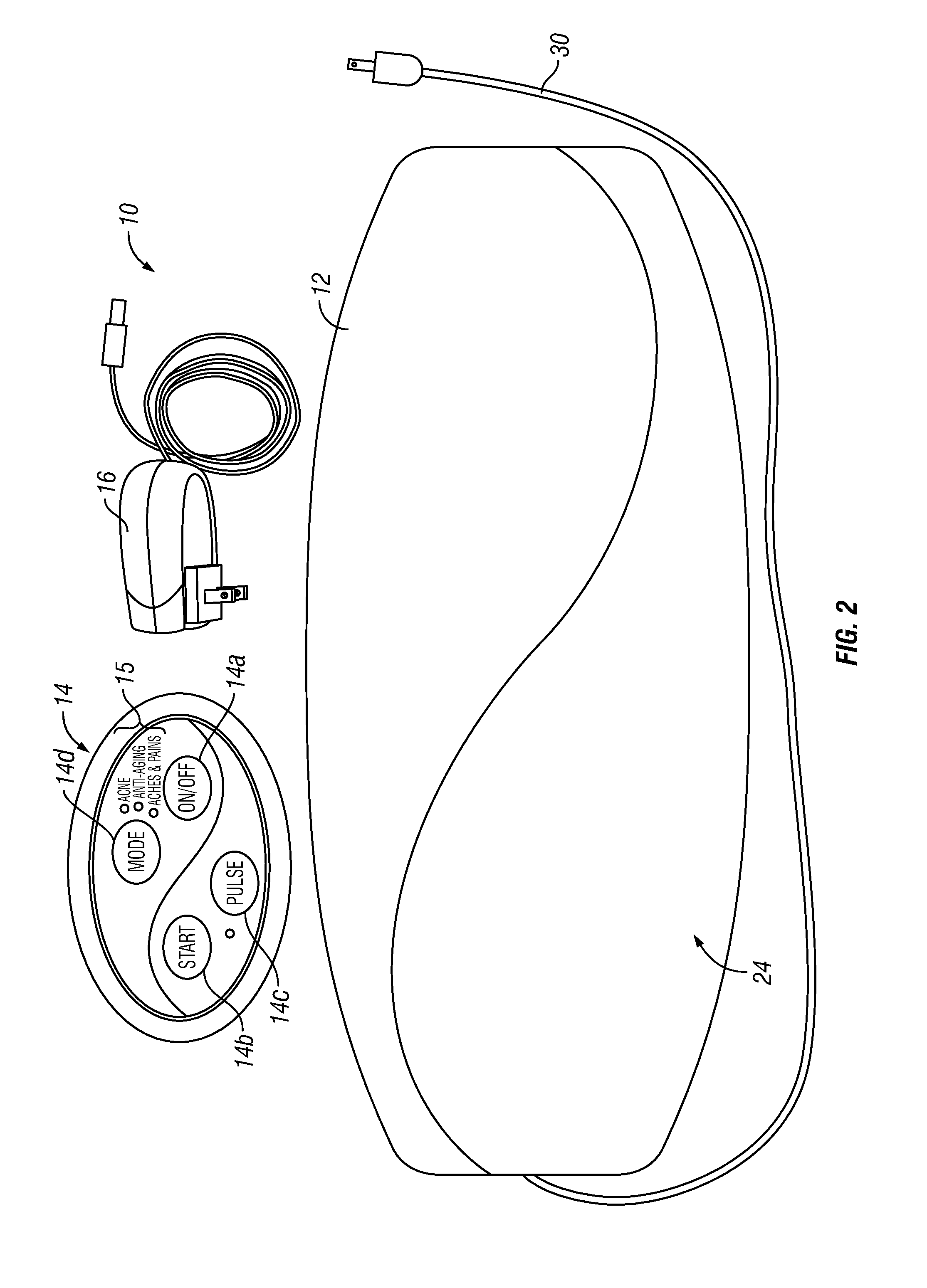Shapeable Light Therapy and Method
a light therapy and shape technology, applied in the field of shapeable light therapy, can solve the problems of all the light emitters of the device being positioned at non-optimal distances from the affected body surface, the prior art light emitting phototherapy device is not optimal for all potential applications, and the formability of the device is not optimal, so as to achieve the effect of improving formability
- Summary
- Abstract
- Description
- Claims
- Application Information
AI Technical Summary
Benefits of technology
Problems solved by technology
Method used
Image
Examples
Embodiment Construction
[0032]The following detailed description and the accompanying drawings to which it refers are intended to describe some, but not necessarily all, examples or embodiments of the invention. The described embodiments are to be considered in all respects only as illustrative and not restrictive. The contents of this detailed description and the accompanying drawings do not limit the scope of the invention in any way. This example refers to the accompanying FIGS. 1-20.
[0033]FIGS. 1 and 2 show one non-limiting example of a system 10 of the present invention. This system 10 includes at least one shapeable pad light emitting apparatus 12, a controller / user interface 14 and a power supply 16. In some applications the controller / user interface 14 may be connected to a single shapeable pad light emitting apparatus 12. In other applications, the controller / user interface 14 may be connected to, and used to simultaneously control, more than one shapeable pad light emitting apparatus 12. Such sim...
PUM
 Login to View More
Login to View More Abstract
Description
Claims
Application Information
 Login to View More
Login to View More - R&D
- Intellectual Property
- Life Sciences
- Materials
- Tech Scout
- Unparalleled Data Quality
- Higher Quality Content
- 60% Fewer Hallucinations
Browse by: Latest US Patents, China's latest patents, Technical Efficacy Thesaurus, Application Domain, Technology Topic, Popular Technical Reports.
© 2025 PatSnap. All rights reserved.Legal|Privacy policy|Modern Slavery Act Transparency Statement|Sitemap|About US| Contact US: help@patsnap.com



